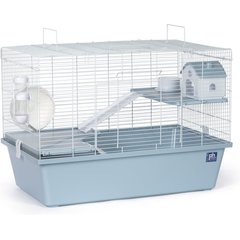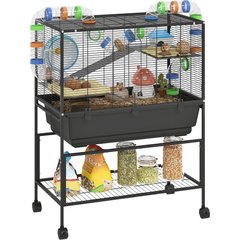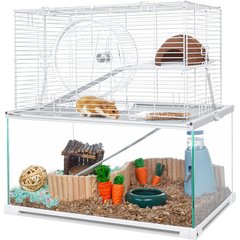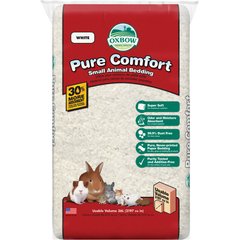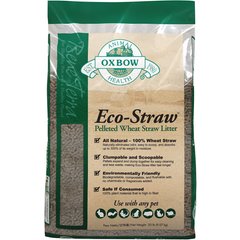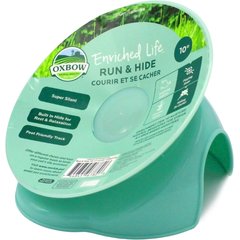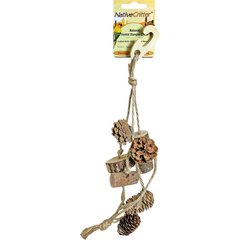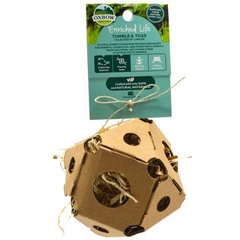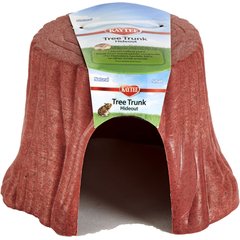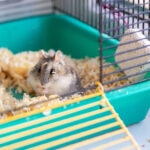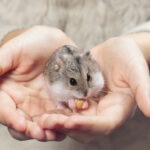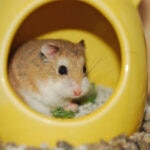Hamster Care Sheet
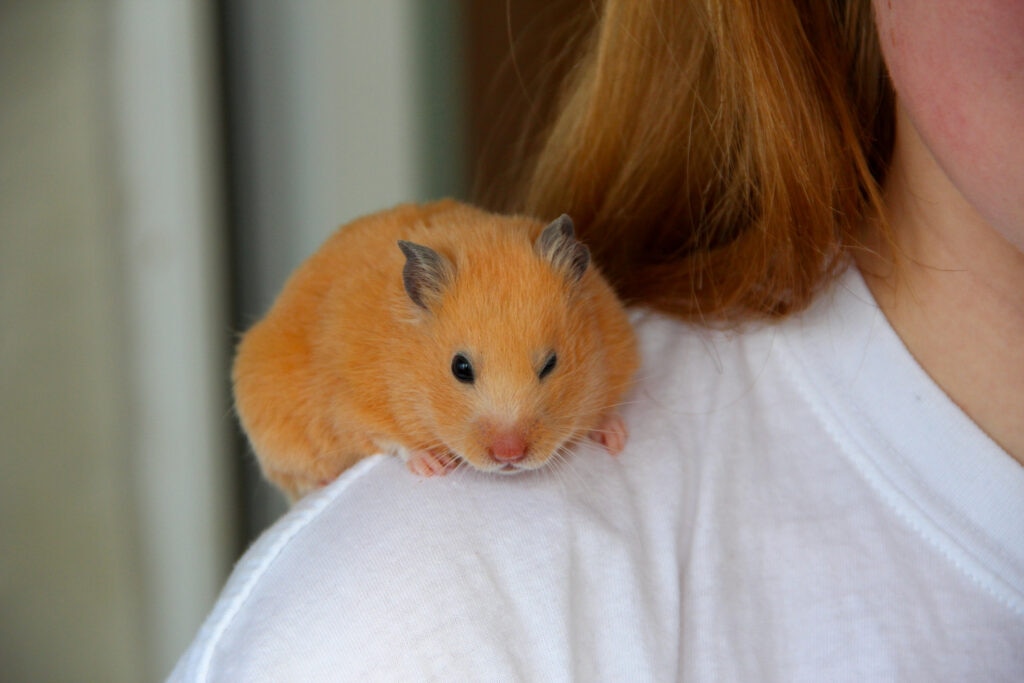
Photo by Alex Milan/iStock/Getty Images Plus
Hamsters are small, cute, and curious rodents who make great companions for new and experienced pet parents. If you’re planning to care for a hamster, it’s recommended that you research everything you need to give your pet a healthy and happy life.
Overview
- Hamsters are busy little pets who like to play with toys and run on a wheel.
- Hamsters are notorious for escaping their enclosures if they don’t have an appropriate cage for their size.
- The best hamster habitat depends on the size and species of your pet.
Fun Facts About Hamsters
- Hamsters have limited vision and can only see a little bit of color.
- Hamster teeth never stop growing—these rodents need chew toys to prevent overgrown teeth.
- There are more than 20 hamster species, but only five are common pets, including the Syrian hamster, Chinese hamster, and Roborovski dwarf hamster.
Hamster Cages
Different hamster species require different enclosures. Syrian hamsters generally do better in wire cages, while Roborovski dwarf hamsters need a solid enclosure to prevent escape.
Research your hamster’s species to guide your enclosure type and get a size large enough for them to run, burrow, and sleep.
At a minimum, hamster cages should be 24 inches long, 12 inches wide, and 12 inches high. The bigger the better, as more room gives your hamster enough space for various activities.
Recommended Products
Enclosures should have bedding that’s soft enough for hamsters to dig through. Stick with paper or fiber-based bedding and avoid cedar and pine wood shavings—these tend to have a strong odor and release harmful chemicals.
Recommended Products
Recycled newspaper, unused paper towels, or toilet paper are also solid options.
Decorating your hamster cage with fun accessories is nice, but be mindful not to overcrowd the enclosure. Include a hamster wheel, chew toys, and designated areas to climb and burrow.
Recommended Products
Adding and removing decor every so often is OK to keep your hamster stimulated. Choose items with varying textures and materials.
While you may be tempted to purchase a hamster ball for your pet, these devices are actually dangerous and should be avoided.
Spot-clean your hamster cage daily by removing uneaten food and soiled bedding. Clean the food and water containers regularly. Change your hamster’s bedding weekly and disinfect the cage and toys with a mild detergent.
Hamster Food
Even though hamsters are nocturnal and tend to eat at night, you don’t have to stay up to feed them. Offer food on your schedule and clean out your hamster’s food bowl before giving a fresh meal. Discard any food your pet has hidden within their cage.
Hamsters eat a variety of pellets, grains, and seeds. Feed them commercial hamster food once daily, and supplement with fruits and vegetables like apples, broccoli, and carrots.
Recommended Products
You can add small amounts of cooked animal protein, like unseasoned chicken. Hamsters can also eat dried insects, but most of their meals should be plant-based.
Some foods are toxic or unhealthy for hamsters. Avoid feeding your hamster:
- Almonds
- Avocados
- Candy and chocolate
- Onions, chives, scallions, and leeks
- Citrus fruits like lemons and oranges
- Raw foods including kidney beans, potatoes, and rhubarb
- Salty and sugary foods
- Seasoned food or anything with spices
- Pickles
- Tomatoes
- Garlic
- Fruit pits and seeds
Even though some of these foods are safe to eat, it’s not healthy for hamsters to regularly eat them or consume them in large amounts. Foods high in fat, calories, and sugar should be given only rarely and in small quantities.
Handling Your Hamster
Give your hamster time to adapt to their new surroundings in your home. Not all hamsters want to be held, and when they’re young, they may not show any signs of wanting that type of affection. Larger, older hamsters may show an interest in being held.
To hold a hamster, follow these steps:
- Place your hand inside the cage for a couple of seconds so your pet knows you’re there and they aren’t caught off guard.
- Lift them with their face toward you and hold them with both hands.
- Cradle the bottom of their body with one hand for support and don’t hold them too tight.
- Don’t wake your hamster to hold them, and be gentle while handling them.
- Hamsters can feel threatened at your approach, so don’t corner them in their cage or make loud, sudden noises.
- Pay attention to their behavior while they are being held.
- If they show distress, put them back in their cage.
- Always wash your hands before and after handling your hamster.
Hamster Health
Take your pet to a vet annually, more frequently if you notice any abnormal signs. Hamsters should have full, shiny coats and bright eyes, eat when hungry, and play and run around their cage.
Look for signs of sickness, including:
- Dirty or matted coat
- Hair loss
- Excessive itchiness or sneezing
- Wheezing or labored breathing
- Weight loss or loss of appetite
- Shaking, shivering, or inactivity
- Nose, ear, or eye discharge
- Diarrhea
- Dull eyes
- Skin lumps or bumps
- Wetness in the tail area
- Hunched posture
Your hamster may hide illnesses and ailments, so by the time you notice a problem, it could have been going on longer than you realize.
Hamster Supply Checklist
- Appropriately sized enclosure or cage
- Bedding
- Food and treats
- Food dish
- Water bottle
- Exercise wheel
- Chew toys
- Hide box and other decor
- Cleaning supplies
FAQs About Hamsters
What is the lifespan of a hamster?
The average hamster lifespan is 18 months to 3 years.
How much does a hamster cost?
The cost of a hamster varies widely by the hamster species, where you’re buying from, and the associated supplies for care. Adoption can range from $10–$75 or more, and setup expenses can be hundreds of dollars in food and supplies.
Are hamsters omnivores?
Yes, hamsters are omnivores, primarily consuming a plant-based diet with the occasional animal protein.
Do hamsters like to be held?
Not all hamsters enjoy being held, and it’s OK if yours prefers less interaction. Before picking up and holding your hamster, give them time to adjust to their new surroundings once you bring them home.
How big can a hamster get?
Hamsters can grow up to 13 inches from head to tail, depending on the species.
